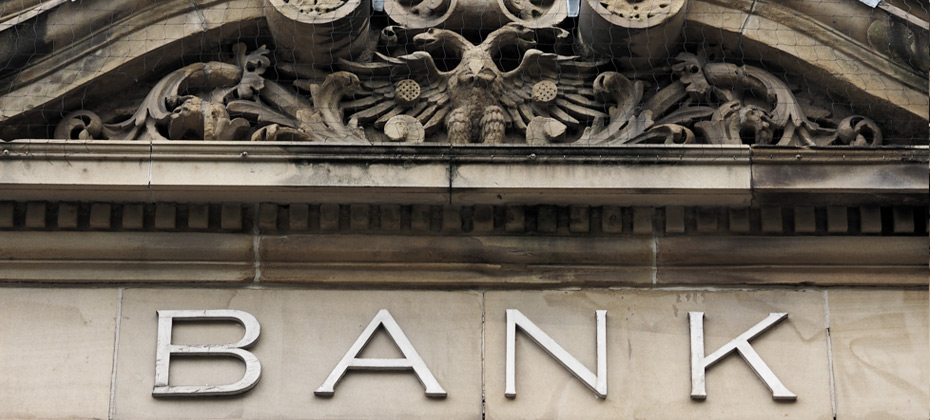Latest Posts
With Detroit’s Motor City being the epicenter of the North American automotive manufacturing industry, that detail should come as no surprise. Furthermore, a recent analysis of Experian data showed that of the nearly 12.6 million consumers who returned to market to purchase a new vehicle, 60.9 percent remained loyal to their brand. Consumers going from a Certified Pre-Owned (CPO) vehicle to another CPO vehicle from the same original equipment manufacturer (OEM) showed even higher loyalty rates at 75 percent. Seeing as how pre-owned vehicle purchases are on the rise, and becoming more and more popular among consumers across all credit risk tiers, it isn’t unexpected to see higher loyalty rates in the CPO category. CPO vehicles are an attractive option for both auto manufacturers and consumers. Auto manufacturers continue to increase sales through higher rates of lease penetration, then channel these off-lease vehicles into certified pre-owned fleets. In essence, they are controlling both supply and demand of their off-lease used vehicles and building an amazingly loyal customer base. By understanding these loyalty rates, manufacturers, dealers and resellers are able to make smarter decisions that create more opportunities for themselves and in-market consumers. Buying a CPO vehicle can also give consumers an extra layer of confidence when making a purchasing decision because of the multi-point inspections included in the manufacturer’s program. Now, what about Michigan you ask? Well, if you are a Michiganian, you are 63 percent more likely to remain loyal to your particular brand of car. The analysis showed North Dakota (62.4 percent) and South Dakota (61.4 percent) round out the top three states with the most brand-loyal consumers. But, regardless of home state, which brands do consumers choose time and time again? Well, for overall brand loyalty including all purchase types, Tesla ranked highest, with 70.3 percent of Tesla owners choosing to buy another. Subaru was second, with 65.9 percent of its owners coming back, followed by Ford at 65 percent, Toyota at 63.5 percent and Mercedes-Benz at 63.1 percent. Other findings: CUV/SUV owners were most loyal when returning to market, with 69.6 percent returning to buy another CUV/SUV, followed by pickup owners (59.6 percent), sedan owners (58.4 percent), minivan owners (33.2 percent) and hatchback owners (29.4 percent). CPO owners choosing to purchase another CPO vehicle, were loyal to: Ford, 84.6% Mercedes-Benz, 82.8% Honda, 81.9% Toyota, 81.6% Lincoln, 78.1% CPO owners that chose to buy a new vehicle, were loyal to: Kia, 65% Ford, 63.5% Toyota, 63.1% Honda, 60.5% Chevrolet, 58.4% To find out more about Experian Automotive’s research into the automotive marketplace, visit https://www.experian.com/automotive/auto-industry-analysis.html.

Using digital technology like a big bank How was your holiday? Are the chargebacks rolling in yet? It’s no secret - digital technology like mobile device usage has increased significantly over the years, making it a breeding ground for fraudsters. As credit unions continue to grow their membership, their fraud security treatments need to grow as well. Bigger banks are constantly updating their fraud tools and strategies to fight against cybercrime and, therefore, fraudsters are setting their eyes on credit unions. Even as I write this, fraudsters are searching and targeting credit unions that don’t have their mobile channel secured. They attempt to capitalize on any weakness or opportunity: Registering stolen cards to mobile wallets Taking over an account via mobile banking apps Using a retailers’ mobile app to make fraudulent payments Disabling the SIM card in the victim’s phone and diverting the one-time password sent through text message to their own phones These are clever ways to commit fraud. But credit unions are becoming wise to these new threats and are serious about protecting their members. They are incorporating device intelligence with a solid identity authentication service. This multi-layered approach is essential to securing mobile channels, and protecting your Credit Union from chargebacks. To learn more about our fraud solutions, click here.

Experian shares five trends and twists coming over the next 12 months, that could push new boundaries and in many cases improve the customer experience as it pertains to the world of credit and finance.

As we kick off the new year, let’s take a look at some interesting things we learned about data quality in 2016. Our latest data quality report found some concerning statistics about companies and their data quality: 56% of organizations report losing sales opportunities due to bad data. 79% say data clearly ties directly to business objectives, but only 2% trust their data completely. 83% report that poor data quality impacts their business initiatives. Data is at the heart of your organization, and the quality of that data underpins the success of many of your business initiatives. Implementing a successful data quality program, therefore, is imperative to your organization’s future. Building a business case for data quality

Fraud and cybersecurity are two of the biggest risks challenging organizations and the economy today. Fraud has become its own industry, to the tune of $500 billion in estimated losses annually. To strengthen your fraud risk strategies, you need: A multilayered authentication and risk-based approach to prevent fraud. A comprehensive approach to identity with true customer intelligence. To avoid silos and recognize the value of combining your solutions into one platform. The rapid growth of fraud-related activity only reinforces the need for aggressive fraud prevention strategies and the adoption of new technology to prepare for the latest emerging cybersecurity threats. Want to know more?

Experian’s latest Market Trends and Loyalty report shows that for the first time in history, cars with four-cylinder engines have outpaced any other light-duty vehicle type on the road. That’s because the auto industry has been hard at work the past two decades improving both power and fuel efficiency of its engines. Auto manufacturers have been given aggressive fuel efficiency targets (54.5 mpg by 2025), but still need to meet consumer demand for performance. The net result is today’s average four-cylinder engine (188.1 hp) actually has more horsepower than the average V8 from 20 years ago (188 hp). It has helped four-cylinder engines become the most prominent engine type on the road, according to Experian Automotive Vehicles in Operation (VIO) database. Of the vehicles on the road, 37.7 percent are being powered by a four-cylinder engine, compared to 37.6 percent of six-cylinder engines. The top five vehicles at both the VIO and registration levels shows that all but one have four-cylinder engines. Top segments Total VIO Q3 vehicle registrations 1. Full-size pickup 1. Entry-level CUV 2. Standard midrange car 2. Full-size pickup 3. Small economy car 3. Small economy car 4. Lower midrange car 4. Standard midrange car 5. Entry-level CUV 5. Lower midrange car The four-cylinder VIO market share growth will continue in the future. In 2016, for example, four-cylinder engines accounted for 54.2 percent of all engines in new vehicles sold. It is the fifth consecutive year that four-cylinder engines had more than 50 percent market share. Market share for six-cylinder engines has dropped from 32.5 percent in 2012 to 29.7 percent in 2016, while eight-cylinder engines have dropped from 16.1 percent to 12.1 percent.

As 2016 comes to a close, many in the financial services industry are trying to assess the impact the Trump administration and Republican controlled Congress will have on regulatory issues. Answers to these questions may be clearer after President-elect Trump is inaugurated on Jan. 20. However, those in the federal regulatory environment are already exploring oversight and regulation of the FinTech and marketplace lending sector. Warning on alternative credit risk models Inquiries by federal and state policymakers over the past year have centered on how FinTech and marketplace lenders are assessing credit risk. In particular, regulators have asked about how credit models different from traditional credit scoring models and what, if any, new attributes or data are being incorporated into credit risk models for consumers and small businesses. On Dec. 2, Federal Reserve Governor Lael Brainard signaled that policymakers continue to be interested in this area during a wide-ranging speech on the potential opportunities and risks associated with FinTech. In particular, Brainard warned that “While nontraditional data may have the potential to help evaluate consumers who lack credit histories, some data may raise consumer protection concerns” and that nontraditional data “… may not necessarily have a broadly agreed upon or empirically established nexus with creditworthiness and may be correlated with characteristics protected by fair lending laws.” Brainard also suggested that there are transparency concerns with alternative scoring models, saying that “alternative credit scoring methods present new challenges that could raise questions of fairness and transparency” given that consumers may not always understand what data is used utilized and how it impacts a consumer’s ability to access credit at an affordable price. Look for regulators and Congress to continue to focus on the fairness and accuracy of new credit risk models and the data underpinning those models in debates surrounding FinTech and Marketplace lending in 2017. A national charter for FinTech? Earlier this month, the Office of the Comptroller of the Currency (OCC) announced that it was considering the creation of a national charter for FinTech lenders. There has long been speculation that the OCC would offer a national charter for FinTech. Analysts have suggested that the creation of a charter could help increase regulatory oversight of the growing market and also provide additional regulatory certainty for the emerging FinTech industry. The OCC’s proposal would create a special purpose national bank charter for FinTech businesses that are engaged in at least one of three core banking activities: receiving deposits; paying checks; or lending money. The OCC will be developing a formal agency policy for evaluating special purpose bank charters for Fintech companies that will designate the specific criteria that companies applying for a charter will have to meet for approval. OCC has suggested that this will likely focus on safety and soundness; financial inclusion; consumer protection; and community reinvestment. The OCC is collecting comments on the proposed policy through Jan. 15, 2017.

At Experian, we’re proud to be the backbone of financial progress. We’re making sense of data and information in powerful new ways. For example, we are: Opening credit bureaus in developing countries, where access to credit was virtually non-existent. Finding new ways to help consumers better understand credit and how to impact their financial future. Protecting consumers from identity theft and businesses from fraud. Volunteering our time and expertise to improve the communities in which we live and work. We’re investing in the future, through new technologies, talented people and innovations – all of it to help create a better tomorrow. Want to know more?

You know what I love getting in the mail? Holiday cards, magazines, the occasional picturesque catalog. What I don’t open? Credit card offers, invitations to apply for loans and other financial advertisements. Sorry lenders, but these generally go straight into my shredder. Your well-intentioned efforts were a waste in postage, printing and fulfillment costs, and I’m guessing my mail consumption habits are likely shared by millions of other Americans. I’m a cusper, straddling the X and Millennial generations, and it’s no secret people like me have grown accustomed to living on our mobile devices, shopping online and managing our financial lives digitally. While many retailers have wised up to the trends and shifted marketing dollars heavily into the digital space, the financial services industry has been slow to follow. I’m hoping 2017 will be the year they adapt, because solutions are emerging to help lenders deliver firm offers of credit via email, display, retargeting and even social media platforms. There are multiple reasons to make the shift to digital credit marketing. It’s trackable. The beauty of digital marketing is that it can be tracked much more efficiently over direct mail efforts. You can see if offer emails are opened, if banners are clicked, if forms are completed and how quickly all of this takes place. In short, there are more touchpoints to measure and track, and more insights made available to help with marketing and offer optimization. It’s efficient. A solid digital campaign means you now have more flexibility. And once those assets start to deploy and you begin tracking the results, you can additionally optimize on the fly. Subject line not getting the open rate you want? Test a new one. Banners not getting clicked? Change the creative. A portion of your target audience not responding? Capture that feedback sooner rather than later, and strategize again. With direct mail, the lag time is long. With digital, the intelligence gathering begins immediately. It’s what many consumers want. They are spending 25% of their time on mobile devices. Research has found they check their phones and average 46 times per day. They are bouncing from screen to screen, engaging on desktops, tablets, smartphones, wearables and smart TVs. If you want to capture the eyeballs and mindshare of consumers, financial marketers must embrace the delivery of digital offers. Consumer behaviors have evolved, so must lenders. Sure, there is still a place for direct mail efforts, but it would be wasteful to not embrace the world of digital credit marketing and find the right balance between offline and online. It’s a digital world. It’s time financial institutions join the masses and communicate accordingly.

Regardless of personal political affiliation or opinion, the presidential election is over, and the focus has shifted from debate to the impact the new administration will have on the regulatory landscape for banks. While many questions remain regarding the policy direction of a Trump administration, one thing is near certain: change is on the horizon. While on the campaign trail, Trump took aim at banking regulation: “Dodd-Frank has made it impossible for bankers to function. It makes it very hard for bankers to loan money…for people with businesses to create jobs. And that has to stop.” And in his first post-election interview, Trump outlined named financial industry deregulation to allow “banks to lend again” as a priority. Before Election Day, Experian surveyed members of the financial community about their thoughts on regulatory affairs. An overwhelming majority—85 percent—believed the election outcome would impact the current environment. Most surveyed are also feeling the weight of financial regulations established by the Obama administration in the wake of the severe financial crisis of 2008. Five out of six respondents feel current regulations have placed an undue burden on financial institutions. Three-quarters believe the regulations reduce the availability of credit. And less than half believe the regulations are positive for consumers. According to our survey, complying with Dodd-Frank and other regulations has a financial impact for most, with 76 percent realizing a significant increase in spend since 2008. Personnel and technology spend top the list, with an increase of 78 percent and 76 percent, respectively. Top regulations that require the most resources to ensure compliance: the Dodd-Frank Act (70 percent), Fair Lending Act (55), Bank Secrecy Act/Anti-Money Laundering (47) and Fair Credit Reporting Act (42). Specifically, the Dodd Frank and TILA-RESPA Integrated Disclosure were the two most frequently mentioned regulations requiring additional investment, followed by the Military Lending Act and Bank Secrecy Act/Anti-Money Laundering. What lies ahead? It’s difficult to determine how the Trump administration will tackle banking regulations and policy, but change is in the air.

Looking to score more consumers, but worried about increased risk? A recent VantageScore® LLC study found that consumers rendered “unscoreable” by commonly used credit scoring models are nearly identical in their financial and credit behavior to scoreable consumers. To get a more detailed financial portrait of the “expanded” population, credit files were supplemented with demographic and economic data. The study found: Consumers who scored above 620 using the VantageScore® credit score exhibited profiles of sufficient quality to justify mortgage loans on par with those of conventionally scoreable consumers. 3 to 2.5 million – a majority of the 3.4 million consumers categorized as potentially eligible for mortgages – demonstrated sufficient income to support a mortgage in their geographic areas. The findings demonstrate that the VantageScore® credit score is a scalable solution to expanding mortgage credit without relaxing credit standards should the FHFA and GSEs accept VantageScore® credit scores. Want to know more?

Technology sharing can unlock a more effective strategy in fighting fraud. Experian’s multi-layered and risk-based approach to fraud management is discussed as many businesses are learning that combining data and technology to strengthen their fraud risk strategies can help reduce losses. Evolving fraud schemes, changes in regulatory requirements and the advent of new digital initiatives make it difficult for businesses to manage all of the tools needed to keep up with the relentless pace of change.

Let’s play word association. When I say holiday season, what’s the first thing that comes to mind? Childhood memories. Connecting with family. A special dish mom used to make. Or perhaps it’s budgeting, debt and credit card spend. The holidays can be a stressful time of year for consumers, and also an important time for lenders to anticipate the aftermath of big credit card spend. According to a recent study by Experian and Edelman Intelligence: 48 percent of respondents felt thoughtful when thinking about the season 30 percent felt stressed 24 percent felt overwhelmed. Positive emotions are up across the board this year, which may be a good sign for retailers and bankcard lenders. And if emotion is an indicator of spending, 2016 is looking good. But while the holly-jolly sentiment is high, 56 percent of consumers say holiday shopping puts a strain on their finances. And, 43 percent of respondents said the stress of holiday shopping makes it difficult to enjoy the season. Regardless of stress, consumers are seeking ways to spend. Nearly half of respondents plan to use a major credit card to finance at least a portion of their holiday spending, second only to cash. With 44 percent of consumers saying they feel obligated to spend more than they can afford, it’s easy to see why credit cards are so important this time of year. Bankcard originations have fully rebounded from the recession, exceeding $104 billion in the third quarter of 2016, the highest level since the fourth quarter of 2007. While originations have rebounded, delinquency rates have remained at historic lows. The availability of credit is giving consumers more purchasing power to fund their holiday spending. But what happens next? As it turns out, many consumers resolve to consolidate all that holiday debt in the new year. Experian research shows that balance transfer activity reaches annual highs during the first quarter as consumers seek to simplify repayment and take advantage of lower interest rates. Proactive lenders can take advantage of this activity by making timely offers to consumers in need. At the same time, reactive lenders may feel the pain as balances transfer out of their portfolio. By identifying consumers who are most likely to engage in a card-to-card balance transfers, lenders can anticipate these consumer bankcard trends. The insights can then be used to acquire new customers and balances through prescreen campaigns, while protecting existing balances before they transfer out of an existing lender portfolio. With Black Friday and Cyber Monday behind us, the card balances are likely already rising. Now is the time for lenders to prepare for the January and February consolidations. Those hefty credit card statements are coming soon.

Happy holidays! It’s the holiday season and a festive time of year. Colorful lights, comfort food and holiday songs – all of these things contribute to the celebratory atmosphere which causes many people to let their guards down and many businesses to focus more on service than on risk. Unfortunately, fraudsters and other criminals can make one of the busiest shopping times of the year, a miserable one for their victims. The nature of the stolen data has the potential to create long-term headaches for the organization and tens of millions of individuals. Unlike a retailer or financial breach, where stolen payment cards can be deactivated and new ones issued, the theft of permanent identity information is, well, not easily corrected. You can’t simply reissue Social Security numbers, birth dates, names and addresses. For individuals, we need to internalize this fact: our data has likely been breached, and we need to become vigilant and defend ourselves. Sign-up for a credit monitoring service to be alerted if your data or ID is being used in ways that indicate fraud. Include your children, as well. A child’s identity is far more valuable to a fraudster as they know it can be several years before their stolen identity is detected. The good news is, in addition to the credit bureau, many banks and auto clubs now offer this as a service to their customers. For organizations, the focus should be on two fronts: data protection and fraud prevention. Not just to prevent financial theft, but to preserve trust — trust between organizations and consumers, as well as widespread consumer trust. Organizations must strive to evolve data protection controls and fraud prevention skills to minimize the damage caused by stolen identity data. There are dozens of tools in the industry for identifying that a consumer is who they say they are – and these products are an important part of any anti-fraud strategy. These options may tell you that the combination of elements is the consumer, but do you know that it is the REAL consumer presenting them? The smart solution is to use a broad data set for not only identity verification, but also to check linkage and velocity of use. For example: Is the name linking to other addresses being presented in the past week? Is the phone number showing up to other addresses and names over the past 30 days? Has the SSN matched to other names over the past 90 days? Since yesterday the address matches to four phone numbers and two names – is this a problem? And it must be done in ways that reinforce the trust between consumers and organizations, enhance the customer experience, and frustrate criminals. Click here to learn more about Experian’s products and services that can help. As we go walking in the winter wonderland, remember, the holiday season is a time for cheer… and vigilance!

This quarter’s State of the Automotive Finance Market report provides a stark reality check for anyone making doomsday predictions about a subprime bubble in the auto industry. While delinquent payments are slightly on the rise, data from the report show that the auto lending industry has responded by reining in loans to subprime consumers. Results found that newly originated loans to prime borrowers jumped two percent to encompass nearly 60 percent of auto loans financed in Q3 2016. Moreover, loans extended to consumers in the subprime tier fell 4.5 percent from the previous year, and loans to deep-subprime consumers dropped 2.8 percent to the lowest level on record since 2008. When considering delinquent payments, there’s no extreme cause for concern either as overall 30-day delinquencies remained flat from the previous quarter, and overall 60-day delinquencies showed a slight uptick to 0.74 percent in Q3 2016 (0.67 percent in Q3 2015). The move in Q3 to more prime and super prime customers pushed the average loan scores higher for the first time in four years. For new vehicle loans, the average credit score climbed two points to 712 in Q3 2016, marking the first time average credit scores for new vehicle loans rose since hitting a record high of 723 in Q2 2012. For used-vehicle loans, the average credit score jumped five points from 650 in Q3 2015 to 655 in Q 2016. More notable news in the auto loan market – there was a slight increase in interest rates. Interest rates for the average new vehicle loan went from 4.63 percent in Q3 2015 to 4.69 percent in Q3 2016. This increase played a key role in driving more market share to the credit unions. Credit unions grew their share of the total automotive loan market from 17.6 percent in Q3 2015 to 19.6 percent in Q3 2016. For new vehicle loans specifically, credit unions grew their share by 22 percent, going from 9.9 percent in Q3 2015 to 12 percent in Q3 2016. Other key findings from the Q3 2016 report: Total open automotive loan balances reached a record high of $1.055 billion. Used vehicle loan amounts reached a record high of $19,227, up by $361. The average new vehicle loan amount jumped to $30,022 from $28,936. Share of new vehicle leasing jumped to 29.49 percent from 26.93 percent. The average monthly payment for a new vehicle loan was $495, up from $482. The average new vehicle lease payment was $405, up from $398. The average monthly payment for a used vehicle loan was $362, up from $360. The average loan term for a new vehicle was 68 months. To see the full report results, or to download the webinar and presentation, visit https://www.experian.com/automotive/auto-data.html